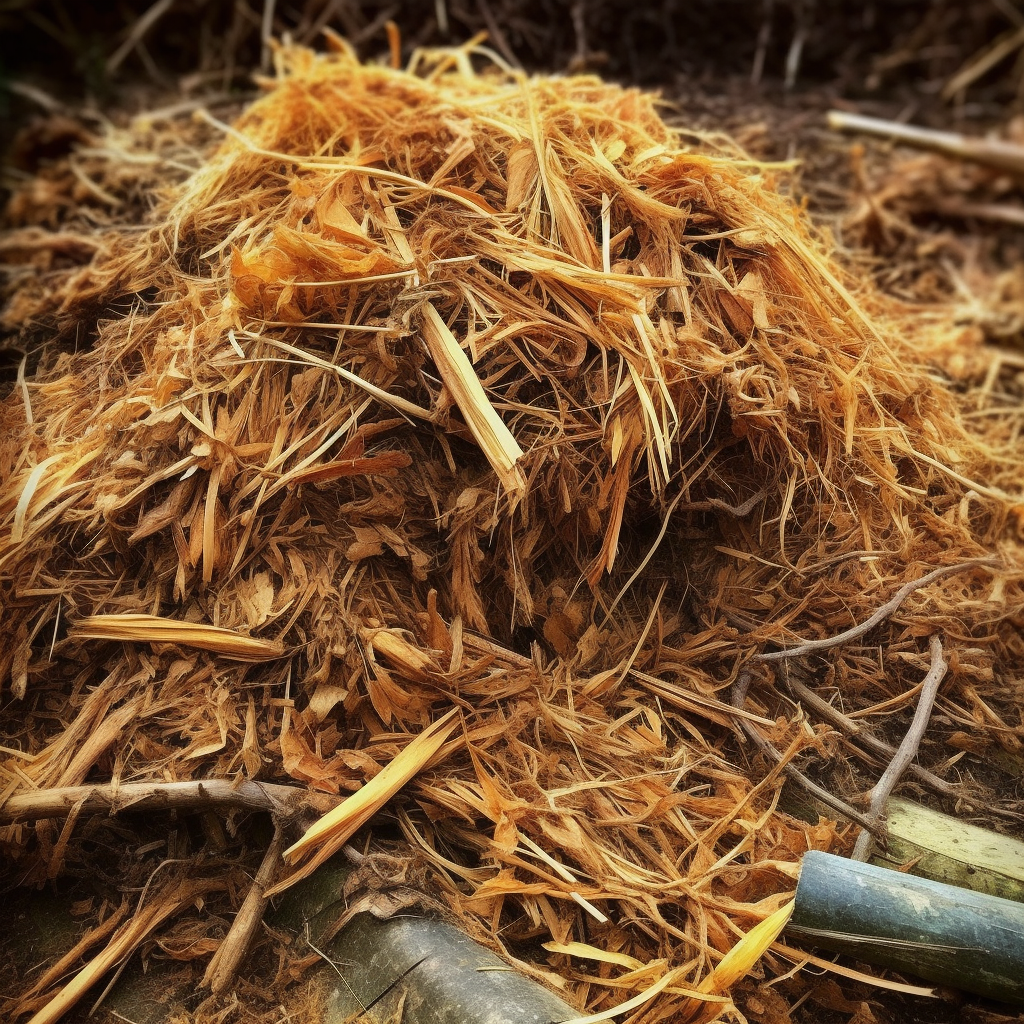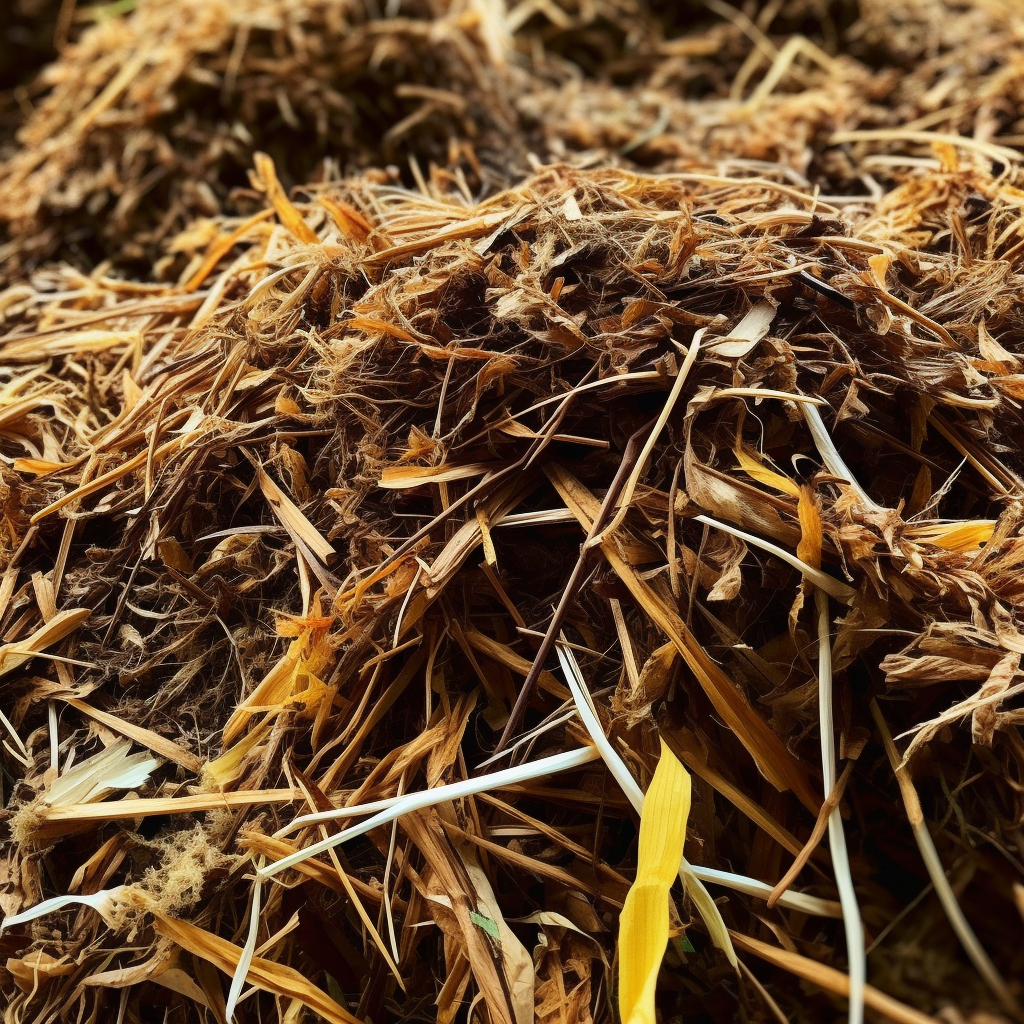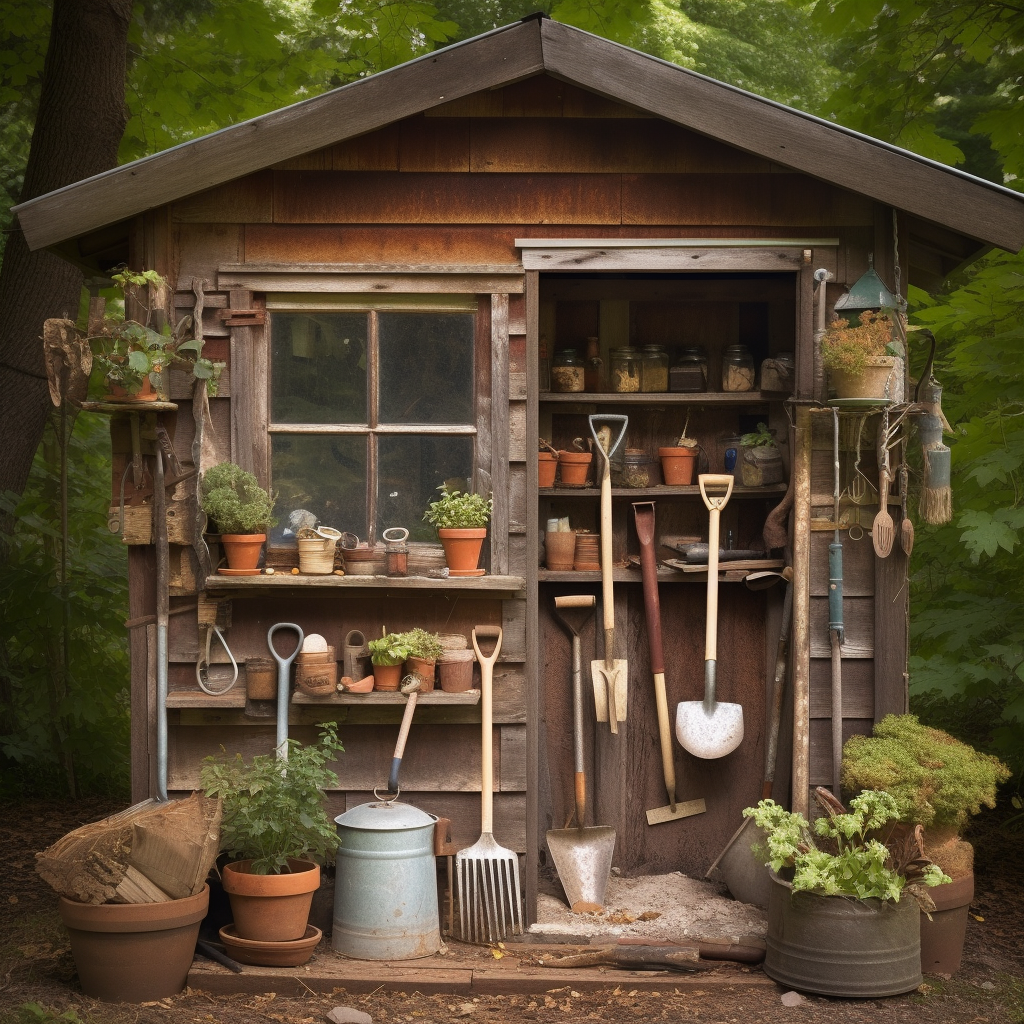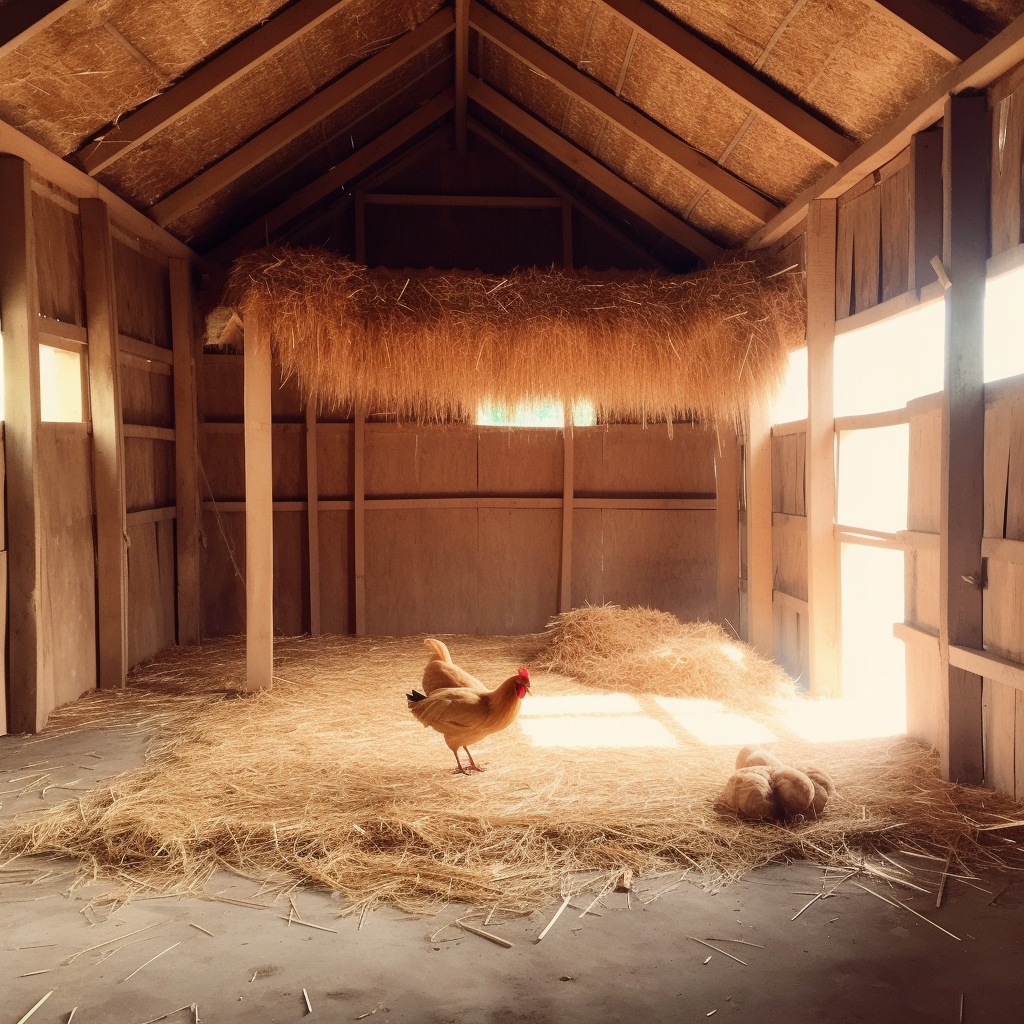Using Straw as a Mulch in the Garden
Using straw as a mulch in the garden is a great way to use your animal bedding. Of course, you can apply straw straight from the bale to your garden beds as well if you need a good mulch material. The straw will keep the moisture in the soil and eventually break down into the top layer of your garden beds. We use straw from our chickens and ducks in compost and then apply the composted material to our vegetable gardens and around our food forest fruit trees.
Fresh Straw & Animal Clean-Out Straw
There are two kinds of straw we use on our homestead. 1. Fresh straw still in bails. 2 Dirty straw that has been in the animal coops and runs.
The majority of our fresh straw goes straight into the chicken and duck coops. After spending some time there soaking up the animal poop it gets mucked out with a garden fork and put into a compost pile. After the compost pile it eventually makes its way out to the garden.
Every once in a while we are in need of some mulch and will grab fresh straw from the bale to go right out in the garden. However, it is my choice I will cycle through the chickens and ducks before using the straw as a mulch for the fruit trees and vegetable gardens.

How to Use Straw as a Mulch
- Remove straw from the bale.
- Place it around the crops or trees that you want to mulch.
- Make sure that you do not put the straw directly against the plant stem or tree bark.
- Place the straw on the ground so that it is 1 to 2 inches thick
Alternative Plan
Alternatively, you can run the straw through your chicken and duck coop. Place it in a compost pile. Turn it every few days for several weeks. Apply it to your plants and trees as composted or partially composted straw,
Composting Straw
Choosing to compost the straw prior to applying it as a mulch is a good strategy. This allows some of the material to break down and create a fluffy layer that plants love near their roots. Everyone knows how expensive bags of compost are. If you have chickens, ducks, goats, or rabbits, your backyard homestead can be a composting machine.
Pile the straw from the animal bedding. Add layers of kitchen scrapes or clippings from the garden. Even grass clippings from the lawn work well. Alternate layers of straw with layers of scrap materials until you have a 3 or 4-foot tall pile. Let the pile sit for a couple of days and then turn it with pitchfork. Every couple of days turn the compost pile until it no longer heats up from the mixing process. Let the pile sit for 2-3 weeks and then place the compost or partially composted straw into the garden.
Use a 5-gallon bucket or a wheelbarrow to carry the material to different plants and trees.

Straw in Raised Bed Gardens
Straw is an excellent mulch for raised bed gardens. At the end of the season mix the straw mulch into the soil. Ultimately, the straw will break down and become part of the hummus layer of light and fluffy soil in your garden beds.
If you are building a hugelkultur raised bed straw is a perfect layer in the bed. Same with sheet mulching. Whether you are using a clean straw bale or the more nutrient-dense animal bedding straw, both work well in hugel beds.
Straw as a Mulch for Fruit Trees
My favorite mulch for fruit trees in our food forest is composted wood chips. However, we always end up mixing straw from the animals into the wood chips when composting material for the fruit trees. This combination of wood chips and straw that has broken down significantly is applied to our trees in the fall after the last apple harvest. Clean out the chicken run and place all the chips and material from the run in a big pile. Flip it a couple of times and then apply it around the drip line of the tree.
Do not apply mulch on fruit trees directly against the tree trunk. Rather apply in a large circle around the tree extending out several feet or more to be in the drip line of the tree.
Straw Problems
The biggest problem with straw is accidentally receiving a straw that has been treated with a persistent herbicide. If the farmer that was growing the straw applied too much it can leach off the straw and into your garden soil. This can cause severe problems for the garden down the road.
You can always ask the source if they know if any chemicals are applied to the straw. The biggest culprits that cause problems are plant growth regulator (PGR) herbicides.
This includes:
- Clopyralid
- Aminopryalid
- Aminocyclopyrachlor
- Picloram.
While most people know about glyphosate, it is actually short-lived and doesn’t pose a significant issue to your garden. On the other hand, the chemicals listed above can last for several years. They will inhibit the growth of plants. As an example, a tomato or zucchini may germinate and send up its first leaves and then quickly wither, grow odd shape leaves, and eventually succumb to the chemicals.
Tools for Moving Straw
There are many tools to choose from to make moving straw easier. You can always just grab it by the handful when applying it to the chicken coop or duck run. However, when it comes time to scoop it up and put it into a compost pile, I prefer using a pitchfork.

Pitchfork
The pitchfork is the best tool for the job. A fork with 6 or 7 tines means you can pick up a lot of material with a single scoop. Pitch forks also have a nice curved angle for easily laying the tines horizontally to the ground or coop floor. This makes scooping everything a breeze.
Garden Fork
The garden fork is the next best tool for picking up straw, woodchips, and compost. The downside of the garden fork is the tines are smaller in number, slightly larger, and flat. This means you will be bending down more to get the last bit. However, the garden fork is still significantly better for the task than hands or a simple shovel.
Wheelbarrow
Moving materials around the backyard garden are infinitely easier with a wheelbarrow. If you do not have one get one.
Our chickens and ducks are in the rear of our property, however, the fruit trees and flower gardens are in the front. We move the composted mulch from the chickens and ducks out to the front with a wheelbarrow every single year.
Rake
Depending on how large your animal run area is a rake can help collect the straw and woodchips easily. Both a leaf rake or a garden rake can get the job done. Then scoop up the materials with your pitchfork or garden fork.
Shovel
A shovel has many purposes. Picking up straw is not one. Use your shovel for digging garden beds, making holes for fence posts, etc. However, please do not use a pointed shovel to scoop up straw and wood chips. If you have a snow shovel, you can use that in a pinch, but get yourself a fork sooner than later.
Pair of Work Gloves
When handling animal bedding materials wear a pair of work gloves. You will never get all the material scooped up with the tools. A pair of gloves keeps the poop off your hands. If you like poop on your hands than by all means get those last few chunks with your bare hands.
Straw as a Mulch FAQ
Is nonorganic straw risky?
The biggest risk of using a nonorganic straw is the chance that it happened to be treated with a persistent herbicide. These chemicals do not quickly break down. While many gardeners have encountered issues with their compost due to these persistent herbicides. This has not been an issue I have ever faced. Of course, if you want to be extra careful you will need to choose a straw that comes from an organic source. These may be hard to source. As a result, some gardeners choose to use other materials like wood chips instead of straw. However, if people you know are using the material for their animals and in their local gardens ask them where they are getting the materials and you will most likely end up being ok to use.
Do you have to compost chicken straw before placing it around vegetable gardens?
Yes, chicken manure is hot. It has a ton of nitrogen it. If you place the chicken manure directly on young plants or trees it has the potential of burning them due to the excess amount of nitrogen. I recommend cycling the chicken manure and straw in a compost pile until the pile turns cold. Then apply it to your vegetable gardens.
On the other hand, duck poop is actually not an issue. Feel free to apply duck house straw straight to the garden without issue. Be cognizant of putting poop right into the gardens where crops you are growing to eat are growing. You don’t want the lettuce for your salad or zucchini for a stir fry to be laying directly on duck poop.

Alternative materials for mulch?
My favorite alternative material for mulch in the garden is wood chips. It is possible to get wood chips for free or at least very low cost. Avoid the wood chips from the garden center and instead connect with a local arborist for mulch from tree clippings.
When I use the Hoss stirrup hoe in the garden for weeding. I collect the weeds and toss them into the compost pile in the chicken run. This material adds additional green material to the straw compost piles and helps it break down for future use.
Additionally, using materials from your own garden and fruit trees as mulch is a good option. Tree branches can be cut up and placed directly on the ground. Plants like comfrey can be grown to be used as a green mulch. Many other plants like sunchokes can also serve as green mulch during the growing season. By chopping and dropping these materials you can feed the soil while mulching.




Recent Comments